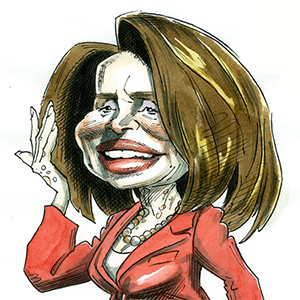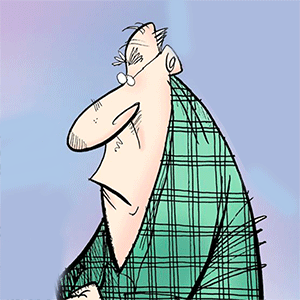Biden Was the Fluke in 2020, Not Trump in 2016
President-elect Donald Trump's win two weeks ago in Pennsylvania was always right in front of you if you were objectively listening to the concerns of the people and the data showing the most important, misread trend of all: The Republican Party had now become the party of work.
In interview after interview, waitresses, welders, rank-and-file union members, plumbers, HVAC small-business owners, hairdressers and barbers would tell national news reporters, including me, that they were voting for Trump.
No matter how often these voters said this, it often was dismissed as an outlier. Or it was placed in a silo of race, meaning it was only the white working class. The blindness among reporters and Democrats was that they thought it was only white middle-class voters behaving that way, missing that working-class voters of all races were voting shoulder to shoulder.
Why? Because these voters are culturally connected to each other through their communities where they live together, their children attend schools together, and they work side by side. Plus, they share other cultural touchstones, such as church attendance, elevated concerns about crime in their neighborhoods, and the economic stress that affects them all.
Middle-class Latino, Black and white voters voted together as a continuum of the working-class realignment in this state that catapulted Trump over Vice President Kamala Harris. This was a direct result of Democrats shedding voters from formerly guaranteed Democratic Party constituencies.
These voters wanted both candidates to address rising costs, rising crime and a rising sense of insecurity. They were less interested in climate change and social justice issues or in whether or not you put pronouns in your email signature, and more about who was going to make their budget stretch further or who was going to get the drug trade out of their neighborhoods.
Pennsylvania has always been a majority working-class state. According to the latest census data, only 35.3% of Pennsylvania residents have a bachelor's degree or higher, meaning the majority of people in the state are working in trades, such as mechanics, or are welders, laborers, farmers, waitresses or barbers.
These are voters to whom the national Democratic Party rarely speaks directly. Until recently, the old Republican Party also largely ignored them. As Brad Todd, who coauthored with me "The Great Revolt: Inside the Populist Coalition Reshaping American Politics," said, "To working-class voters, if you listen to Kamala Harris talk, it sounds like she's running for the faculty senator at some liberal arts college somewhere."
Angela Wade, a waitress at Wade's Diner in Export, Pennsylvania, who 10 years ago would have been part of the Democratic coalition, said of Harris, "She spoke past me. Trump saw me and spoke to me and the concerns in my life, like the costs of groceries."
When you don't sound like you are trying to work for working-class voters, you lose -- and that loss is across the board in all races. These voters are not inspired by an identity-politics message that was aimed at coastal voters and repeated on national news shows.
Voters look at that and think no one sees them or hears their concerns. Gov. Josh Shapiro (D-Pa.) and Sen. John Fetterman (D-Pa.), who won decisive elections just two years ago, intuitively understood that when they ran for their offices. They kept the working class in their version of the Democratic coalition and won voters who also voted for Trump.
Yes, there is an abundance of Trump-Fetterman voters and Trump-Shapiro voters, largely because both men built more traditional Democratic coalitions that picked up middle-class Democrats who have been turned off by national Democratic politicians who focus too much on social justice and less on basic economic problems.
When I asked Shapiro in the spring if he would ever call those voters "extreme MAGA Republicans," as President Joe Biden often liked to do, he said no.
"I might have a different view," he said. "But I do respect it. And so if you choose to vote for Donald Trump and Josh Shapiro, I assume you've carefully thought about it and you have your rationale and your reason for it."
The finalist to be Harris' vice president joked he might try to convince you there was a better alternative, "but I try to do it in a respectful way."
Fetterman told me in both 2016 and earlier this year that Trump and the people in Pennsylvania have a connection. "Many who voted for me have a deep bond with him," he said, adding that the last thing he would do is disparage them for that bond.
Both men won comfortably in 2022, with Shapiro running as a pragmatic manager with a mantra to "get s*** done," and Fetterman as a populist. And all three -- Trump, Shapiro and Fetterman -- spent more time in places like Cambria, Luzerne and Erie counties than in the bigger cities of Pittsburgh and Philadelphia where voters feel they and their issues are "seen."
When then-Sen. Barack Obama defeated Republican Sen. John McCain in 2008 by a whopping 10.32-point margin of victory in Pennsylvania, he kept the New Deal Coalition, the working-class voters, in his camp by running on "hope and change." His aspirational message appealed to those voters. By the time Obama ran in 2012, he had made the calculation that he could afford to shed most of the white working-class part of the coalition and rebuild the Democratic Party in the image of his values. It was a divisive campaign message, aimed at social justice, climate change and internationalism, which tore into their more centrist ideals.
Obama won Pennsylvania that year over Republican Mitt Romney but by a lot less than he did in 2008, leaving a staggering 280,000 voters on the field who just decided they would not vote for either man. Obama was too progressive for them, and Romney never came across as the guy who would save their job. Instead, Romney came across as the guy who would show up with a box, escort them out of the office, and fire them.
These voters were left essentially homeless until this brash outer-borough real estate developer named Donald Trump came down the escalator and talked to them about the dignity of work, much in the same way that then-Gov. Bill Clinton did in 1992.
They would eventually join with an unlikely coalition of traditional Republican voters that included evangelical, suburban and business types and shock the world by voting for Trump over former Secretary of State Hillary Clinton in 2016.
During the same time, Democrats' registration edge over Republicans began to shrink from a double-digit advantage in the summer of 2008 to 4 percentage points this summer. The state was changing, and it was the working class leading the massive shift.
The election cycle of 2020 should always be thought of as a fluke in a pattern in this state for a number of reasons. First, Trump's rival, Biden, had spent decades here parading himself as the "third senator from Pennsylvania," showing up for Labor Day parades and getting local Democrats elected. Second, Trump's greatest strength is as a fighter, and COVID-19 was impossible to fight against. Biden picked off just enough (80,000) working-class voters and won.
By May of this year, long before Biden dropped out, the working-class coalition had not only moved back to Trump already but actually expanded beyond white voters as more and more Black and Latino voters fled toward Trump for addressing their concerns.
Biden had failed these voters economically. He told them inflation was transitory, but it was not. He told them inflation had gone down. Eventually, the inflation rate had indeed gone down, but he just forgot to tell them that the prices were still growing, just more slowly. He told them the economy was robust, but in their lives, it wasn't. He told them the border was closed. It wasn't.
When Biden dropped out and Harris jumped in, what experts missed was that the die was already cast with working-class voters. She was not reaching them in the way she needed. These voters, men and women, care more about whether they can pay for a car repair when their check engine light goes on than they care about abortion access.
CNN exit polls show that Trump won 13% of Black voters nationally but here in Pennsylvania did much better. He also won 45% of Latino voters. In 2020, he only won 32% of Latinos.
Paul Sracic, Youngstown State University political science professor, explained that in Pennsylvania, it is always the enthusiasm of the working class, along with some minor cohorts in the coalition, that places party candidates for president over the line.
In 1996, Bill Clinton won 27 of Pennsylvania's 68 counties. By 2012, Obama had only won 13 of the counties. The rightward shift in the state has been everywhere if you looked. It happened because of counties like Luzerne, Bucks, Cambria, Northampton and Berks -- counties too few people understand but where the bulk of the working class lives.
Too many reporters and experts didn't look there. They should have. Trump won the state with more votes than any statewide candidate in our history.
========
Salena Zito is a CNN political analyst, and a staff reporter and columnist for the Washington Examiner. She reaches the Everyman and Everywoman through shoe-leather journalism, traveling from Main Street to the beltway and all places in between. To find out more about Salena and read her past columns, please visit the Creators Syndicate webpage at www.creators.com.
----
Copyright 2024 Creators Syndicate, Inc.





































Comments